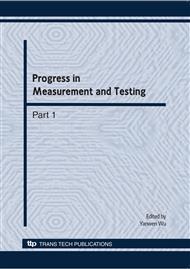p.1250
p.1254
p.1259
p.1267
p.1272
p.1278
p.1283
p.1290
p.1296
Vehicle Flow Detection Using Fast Region Matching with Adaptive Gaussian Mixture Background Model
Abstract:
Video surveillance play an important role in many ITS. In this paper, we present a fast and reliable algorithm for detecting traffic flow count. The core of the algorithm relies on Gaussian mixture background model combined fast cross-correlation region-based techniques in moving object matching. By working with adaptive Gaussian mixture model, obtained the moving vehicle as foreground. Then, fast local correlation, referred to as single matching phase, is achieved by using recursive computation schemes, which enabled us to minimize the amount of calculations required at every new pixel. We have tested our match algorithm in a large set of experiments with video clips and achieved good matching results.
Info:
Periodical:
Pages:
1272-1277
Citation:
Online since:
May 2010
Authors:
Price:
Сopyright:
© 2010 Trans Tech Publications Ltd. All Rights Reserved
Share:
Citation:


